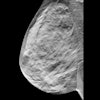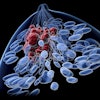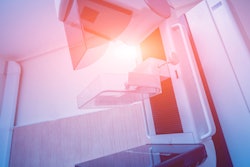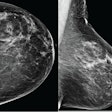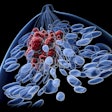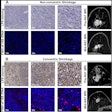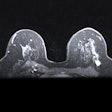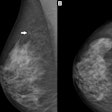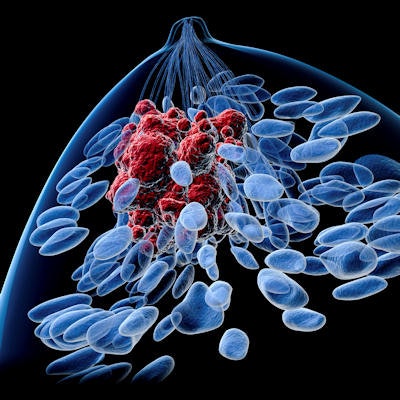
Digital breast tomosynthesis (DBT) with synthesized 2D mammography identifies breast masses at smaller sizes than does full-field digital mammography (FFDM), according to a study published online September 16 in Academic Radiology.
The findings further support the idea that synthesized mammography with DBT is a viable alternative to FFDM, wrote a team led by Dr. Halit Şendur of Gazi University in Ankara, Turkey.
"Synthesized mammography images are generated from DBT slices; therefore, breast masses might be measured more accurately on synthesized mammography compared with FFDM, and synthesized mammography images may be more valuable than FFDM images for treatment decisions in some patients," the group wrote.
Compared with digital mammography, DBT overcomes the masking effect of fibroglandular tissue, and previous studies have shown that it reduces recalls and increases cancer detection rates. But using DBT with digital mammography for 2D images imparts double the radiation dose to women so many practices are beginning to use synthesized 2D images with DBT to address this concern.
In order for synthesized 2D images to be safely incorporated into clinical practice, "all aspects of mammography interpretation should be investigated" -- including synthesized 2D mammography's performance compared with digital mammography in accurately measuring breast lesions, the group noted. Şendur's group conducted a study to compare the performance of synthesized mammography with FFDM for measuring breast masses.
The study included 143 women who underwent both digital mammography and DBT plus synthesized mammography during the same breast compression. Two readers measured the size of masses independently in two sessions that were two weeks apart, blinded to each other's results. The first session included only digital mammography images, and the second session only DBT images.
The researchers found that DBT with synthesized mammography images identified masses at smaller sizes than conventional digital mammography. These results were statistically significant for both readers (p < 0.001).
| Mean breast mass sizes by modality | ||
| Digital mammography | DBT with synthesized mammography | |
| Reader 1 | ||
| Mean mass size | 20.27 mm | 18.50 mm |
| Reader 2 | ||
| Mean mass size | 21.56 mm | 19.89 mm |
However, the study found that differences between the two readers were greater than differences between mass size measured by the two modalities, which suggests that further research on this point is needed.
"This may indicate that interobserver variabilities may be more clinically relevant than mass size differences measured between FFDM and synthesized mammography," the team wrote. "Therefore, further investigations with a larger number of observers will be valuable to confirm the relative importance of each effect."
The results further support the use of synthesized mammography technology with DBT, according to the authors.
"Because the signal obtained from DBT is ideally reconstructed into the correct plane above the detector, viewing masses in DBT slices, and likely on synthesized mammography images, may lead to measuring masses at truer sizes," they concluded. "More accurate size measurements can potentially contribute to more appropriate treatment decisions."

